Review: Monsters, Aliens, and Holes in the Ground
I didn’t really expect to be interested in this book. “Monsters, Aliens, and Holes in the Ground”, by Stu Horvath (of the Vintage RPG podcast, among other things), is a book that looks at the history of tabletop roleplaying games “from D&D to Mothership”, as it says on the cover.
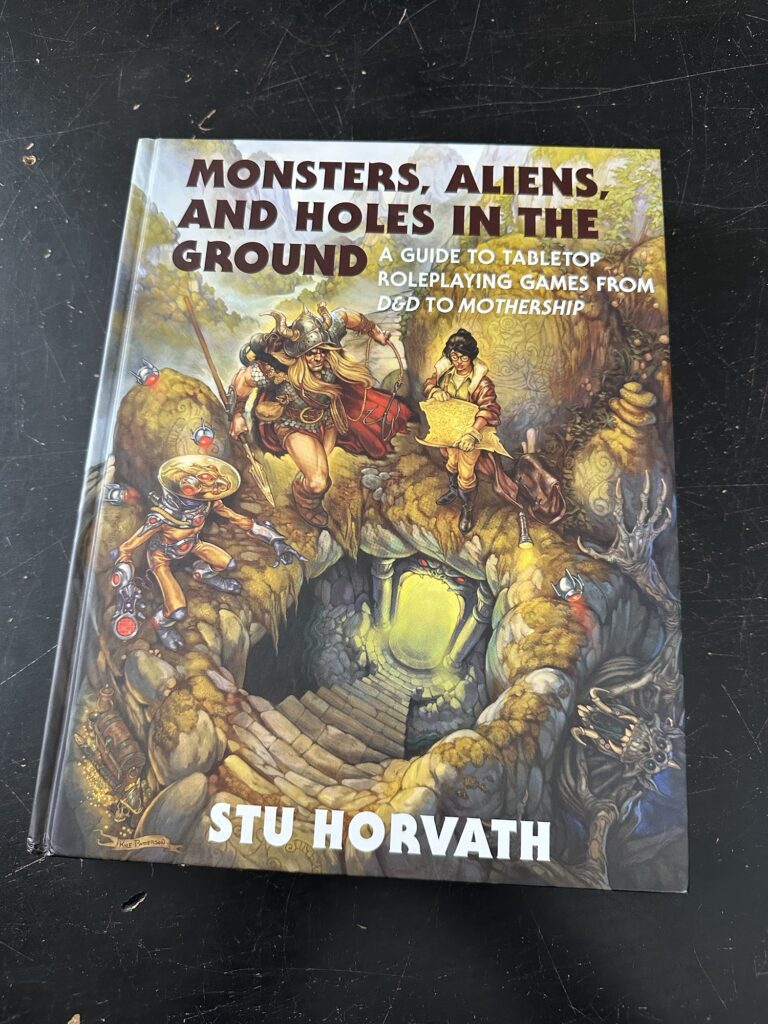
It’s not that I’m uninterested in the history of roleplaying games — I’m very much interested in it, and I have at least half a dozen books on the topic. I just wasn’t necessarily interested in having one more book on that topic. But I got it as a gift a couple months ago, and… I love it. It’s been sitting proudly on my living room table since then, ready to be picked up every now and then for a few minutes of reading some pages picked at random. Let’s dive in!
A Big, Beautiful Book
The first thing to love about “Monsters, Aliens, and Holes in the Ground” is that it is one big, heavy, beautifully photographed book. Under the sturdy hardcover you find some good, decently thick and bright paper that feels good when you flip through the pages. You can tell that the author wanted this to be “an art book” and not just “a book”.
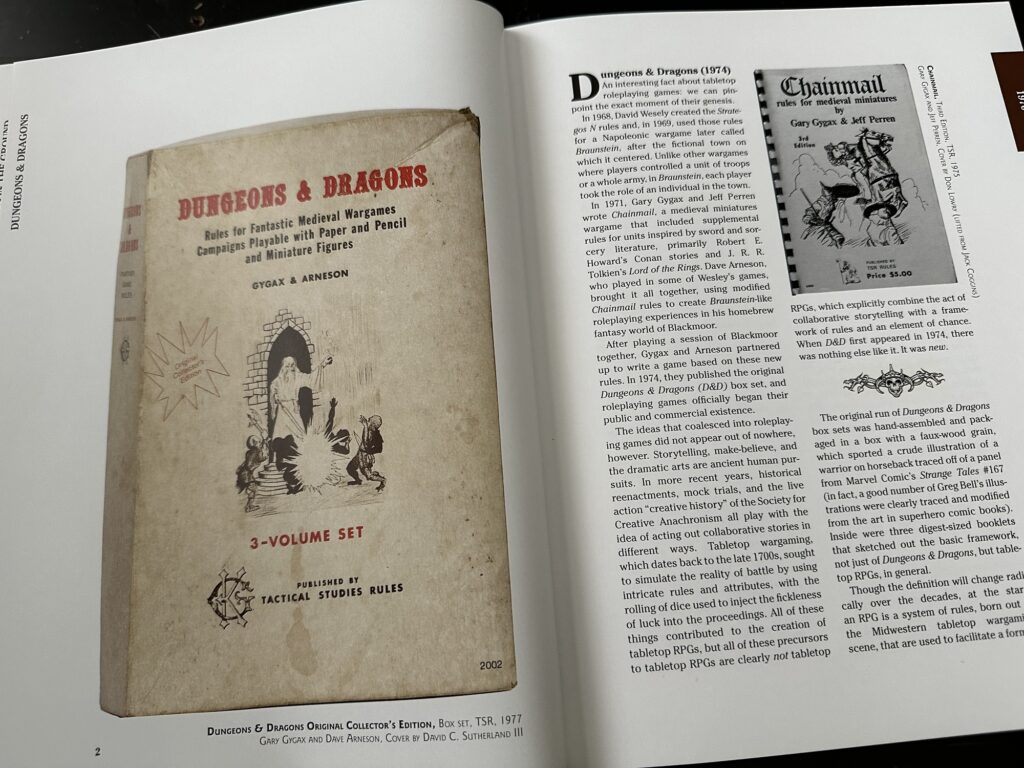
The book is broadly split into one chapter per decade, starting of course a few years into the 1970s, all the way to the 2010s. If you love a good colour-coded page bleed like me, you’ll be equally happy to know that this book has them, so it’s super easy to jump to a specific chapter and browse through that decade’s selected games.
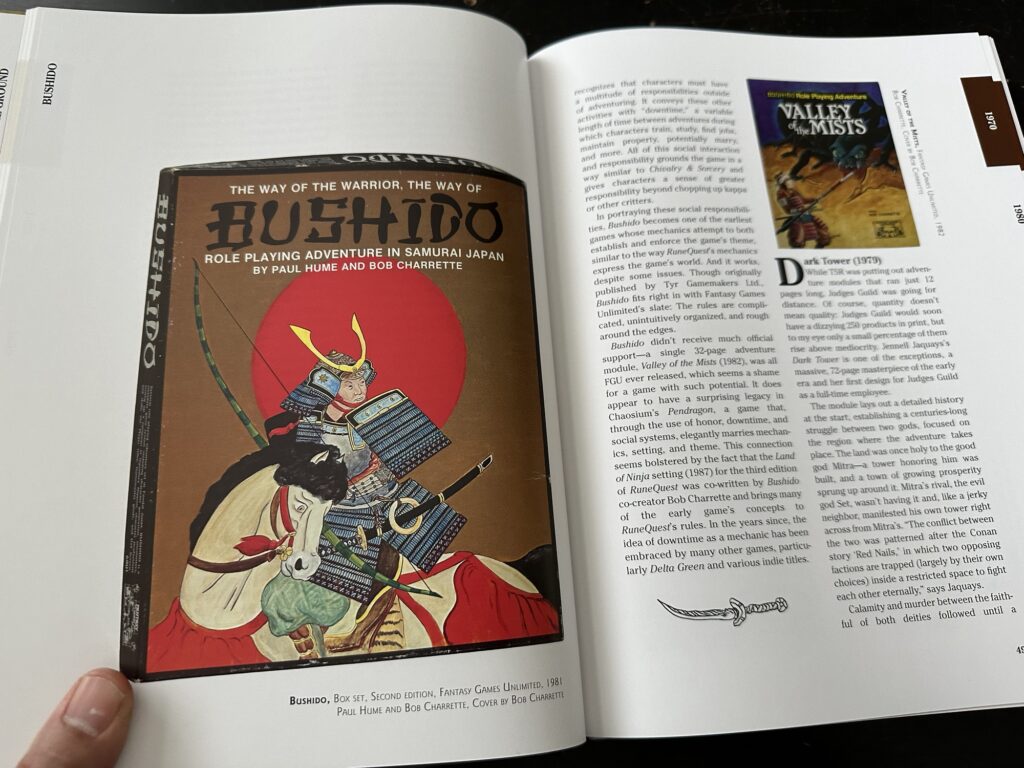
Each entry features one or more pictures of that game: its box or main book, and maybe a few supplements, 3rd-party products, or related zines for longer entries. The pictures are well done, simple, and don’t try to get fancy. There’s still beauty to it though. It’s not “Dungeons & Dragons: Art & Arcana” beautiful, with its plethora of product art, maps, production prototypes, sketches, and so on, but it’s… I’m gonna say “charming”. Pretty much all of the pictures are photos of the author’s own personal collection, so it feels like a mix of scrolling through a well-regarded eBay seller’s store, and browsing through a friend’s beloved collection.
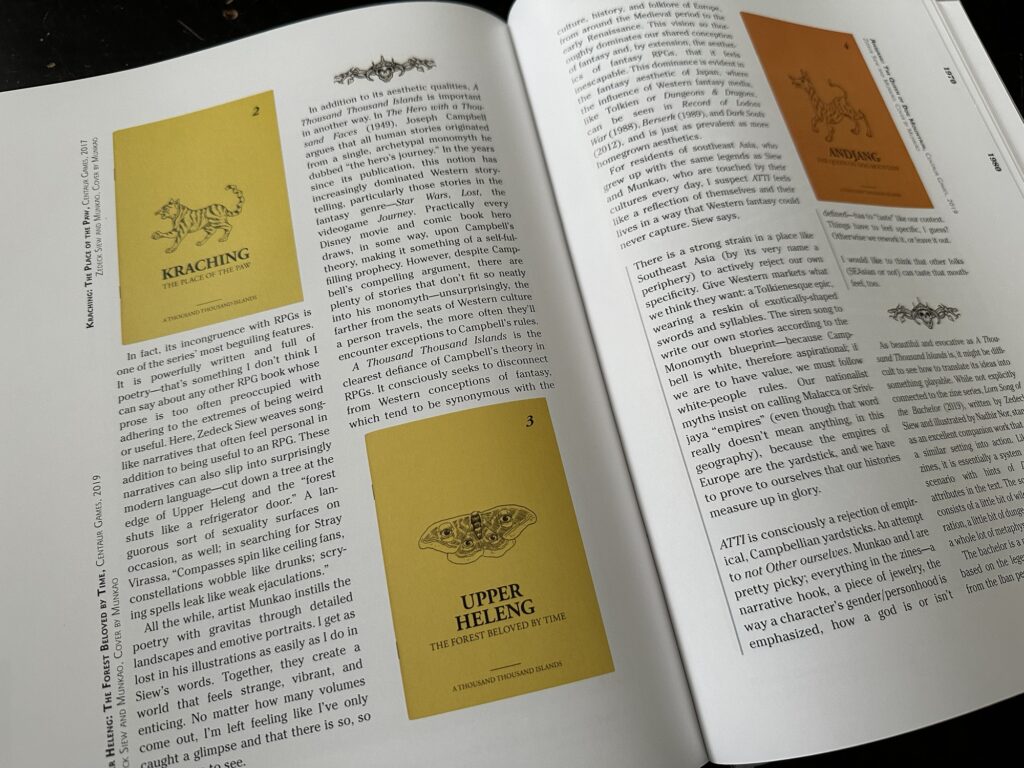
An Opinionated Historical Selection
Sandwiched between the introduction and a glossary plus appendices, the meat of the book is made up of five chapters, one for each decade. Each chapter is then a straightforward stream of entries, one per game, with anything from a few paragraphs to a few pages depending on how much interesting stuff the author has to say about it.
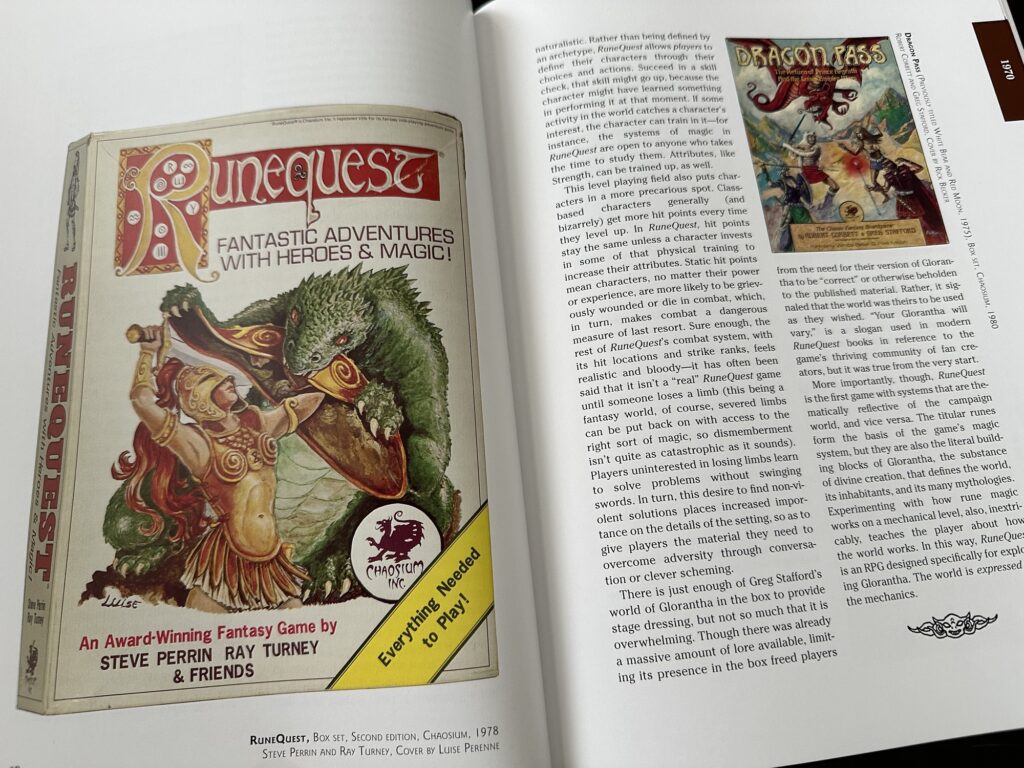
Looking at the relative size of the chapters, something is clear: either the author has his own tastes and biases, or some serious ebb and flow happened to the TTRPG market over time. Look at this:
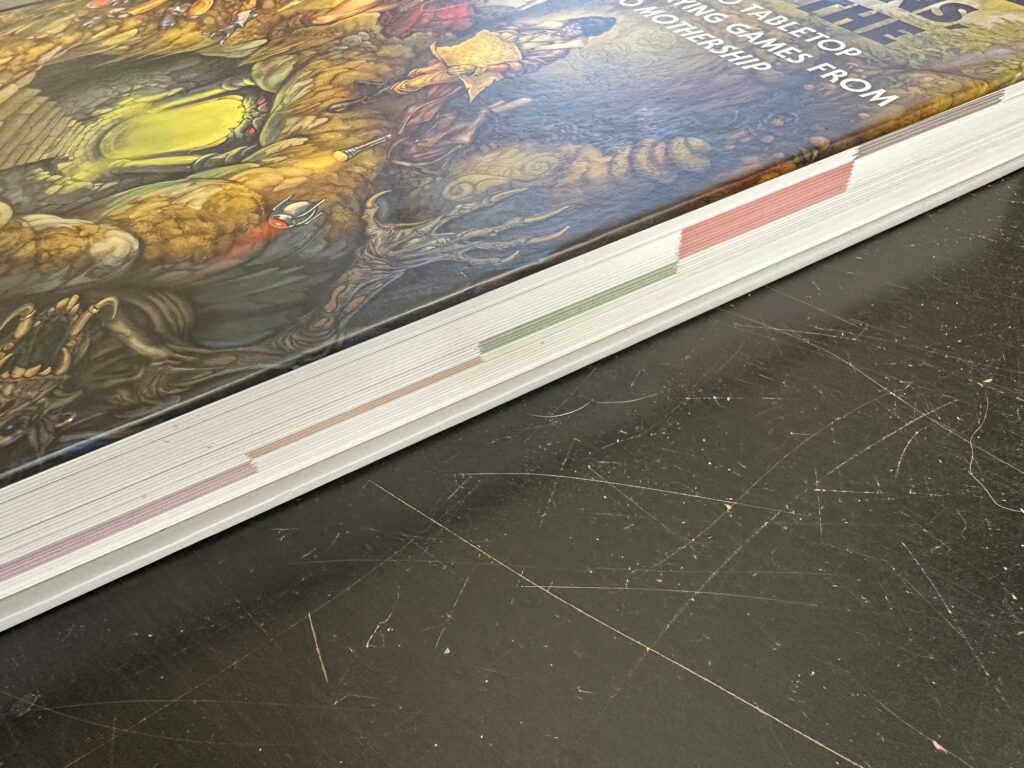
After a moderately sized 1970s chapter we get a massive 1980s chapter, followed by a 1990s chapter pretty much as small as the original decade. The chapter for the 2000s is half the size of the previous one. It bounces back with the 2010s, thankfully, but you have to wonder which way is the cause and effect here. There are of course many avenues to answer this, from market forces within the hobby to public interest in other nascent forms of entertainment, from gamer demographics to the economic realities of each decade… but it’s pretty startling to see this summary of the TTRPG industry’s history laid out in such a clear and simple form as “coloured chapters on the side a book”.
An important thing to note is that the book doesn’t pretend to be exhaustive: this is very much a “selection of notable games” as curated by the author. There’s a good chance that if a game is missing, it’s not because Horvath didn’t know about it, but because he ran out of pages and figured that game wasn’t as important as the other ones to him.
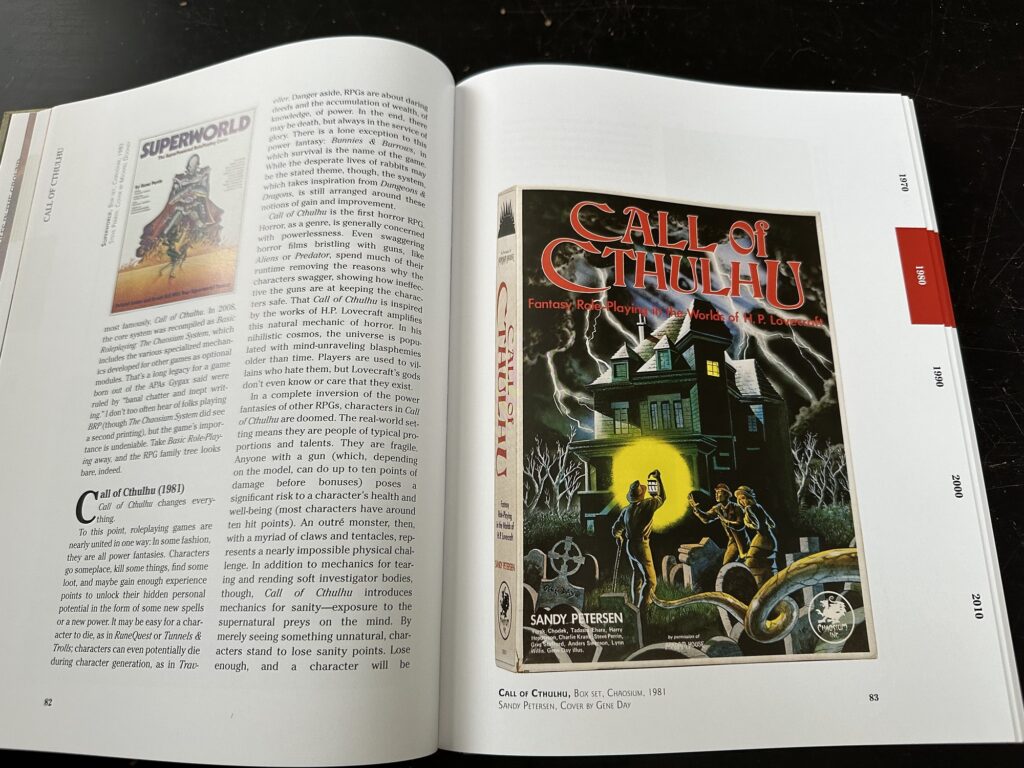
There are a couple of exceptions, however, the most obvious of which is the intentional omission of “Empire of the Petal Throne” and anything else about the world of Tekumel. While that game has undeniable historical significance to the hobby, it was omitted due to the fact that its author, M.A.R. Barker, was a neo-Nazi with at least one published book of white-supremacist power-fantasy, and direct ties to white-supremacist organizations. I’m not sure how well known this was before, but it made for widespread and shocking news to the TTRPG community at large in 2022, a year before this book was published.
Horvath addresses this in the introduction with a well written and well thought-out mini-essay explaining, for instance, why he includes “Call of Cthulhu”, based on the writings of noted racist and Nazi-supporter H.P. Lovecraft, while excluding Tekumel games. I strongly disagree with Horvath’s decision here (I wonder if the timing of the news played an emotional role in it), but I understand his rationale. Plus, it’s his book and his selection of games so hey, he didn’t even have to justify himself.
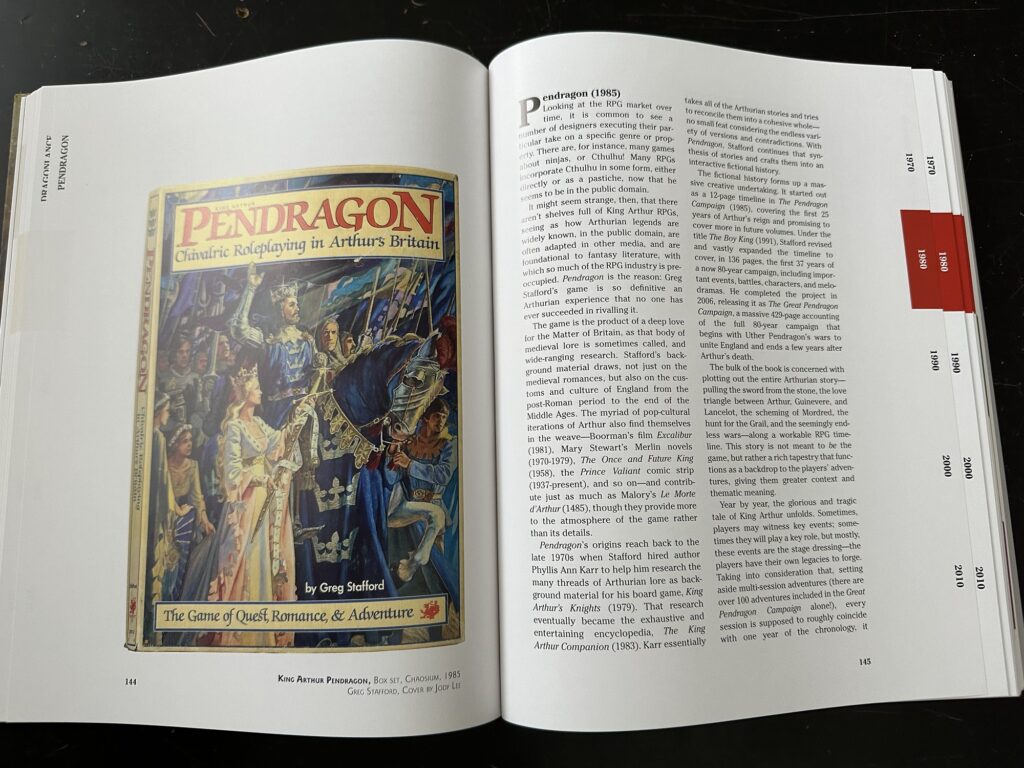
So apart from those rare intentional omissions, don’t worry, you get all the highlights you expect, and then more. Pretty much all the games that you figure should get a longer entry do indeed get a longer entry. So far I haven’t found any notable discrepancy between what I think of a game and how that game is represented in the book. In fact, sometimes I’m surprised to see a game get a much longer and in-depth write-up than I expected!
Always A Nice Thing to Say
The game write-ups are straightforward but not overly academic: Horvath has a real knack for telling you about a game’s contents, historical context, and legacy without making it read like a lecture.
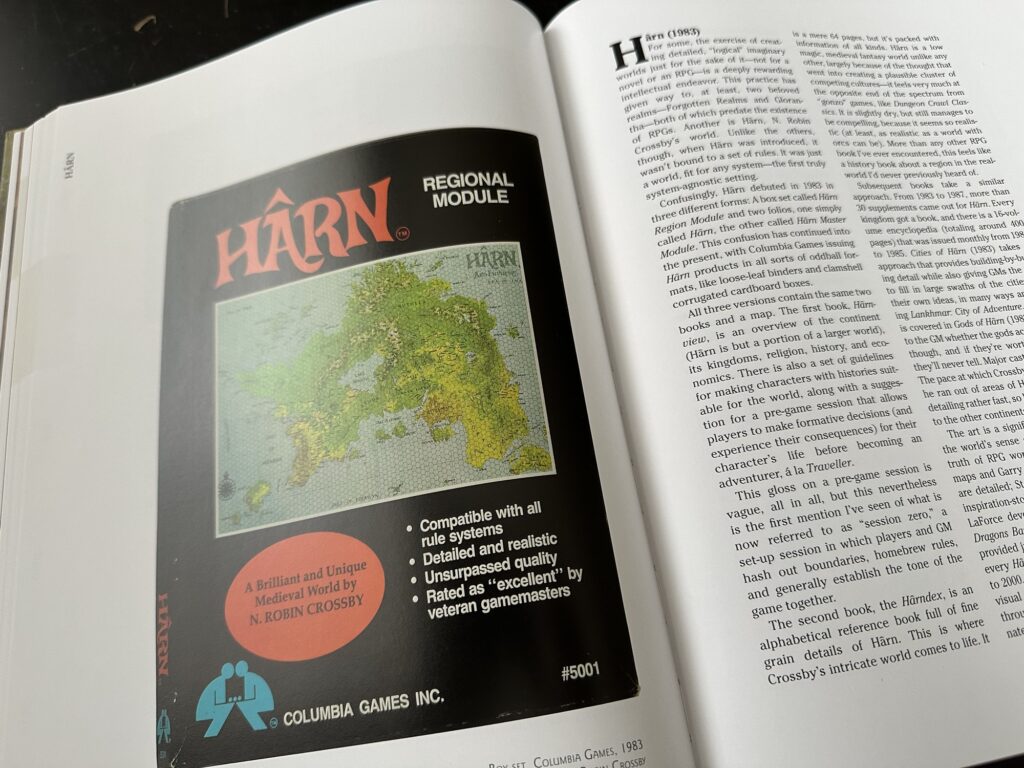
You get many well-researched and interesting historical facts, a few fun anecdotes, mentions of cool mechanics and interesting worlds that make you want to check-out that game, and more. Horvath reads like that one high-school teacher that wasn’t like the others and whose class you actually liked. You learn stuff and you have fun doing so.
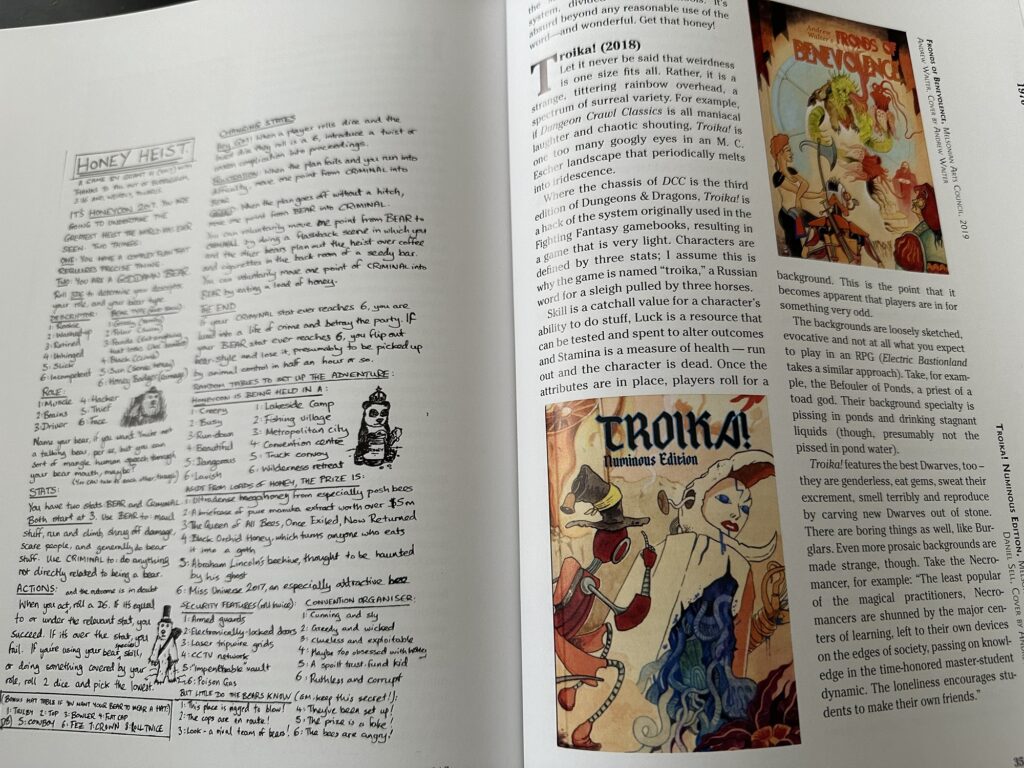
One thing that slowly dawned on me after reading the entries for a few of my “guilty pleasure” games was that Horvath never says anything bad about a game. He does note when a game may, let’s say, not appeal to everyone, or when a game designer might have, ahem, prioritized simulation over ease of play or something. But it’s always lovingly communicated, the way I might tell you about my golden retriever’s “unique personality”. You can’t help but nod when Horvath writes about a game you love, pointing out flaws you’re well aware of, phrasing it so that you smile knowingly.
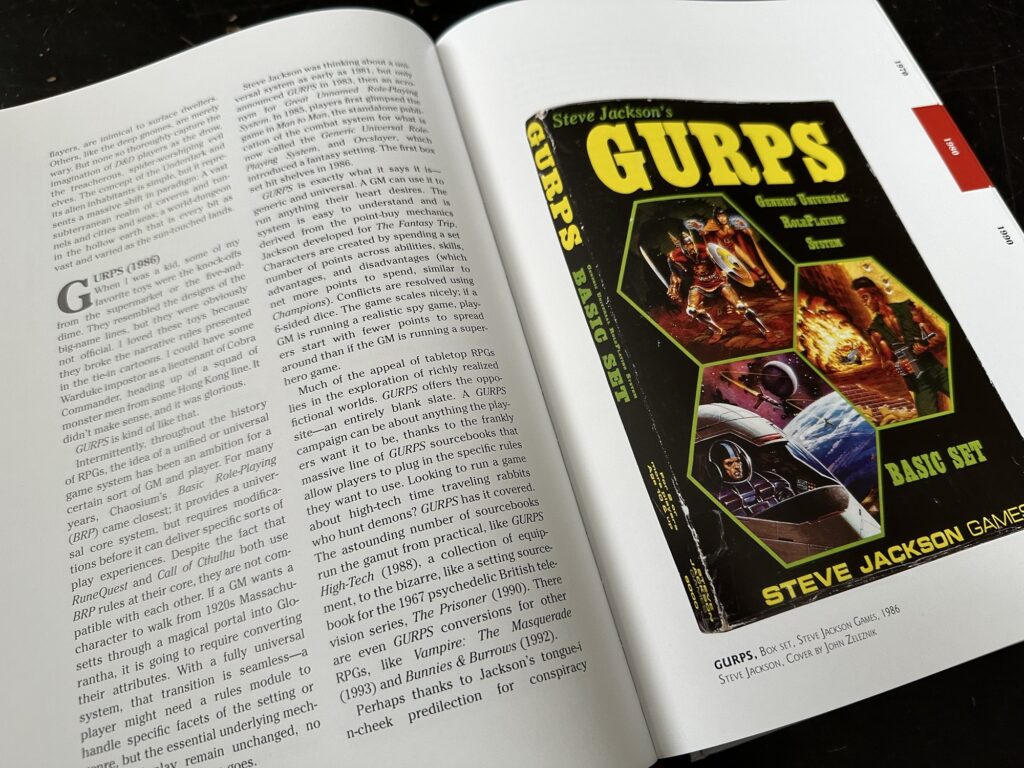

So that’s “Monsters, Aliens, and Holes in the Ground”! Here, for extra gamer nostalgia factor, you can see it with one of the bookmarks I made from some extra RuneQuest boxes I got from an eBay seller:
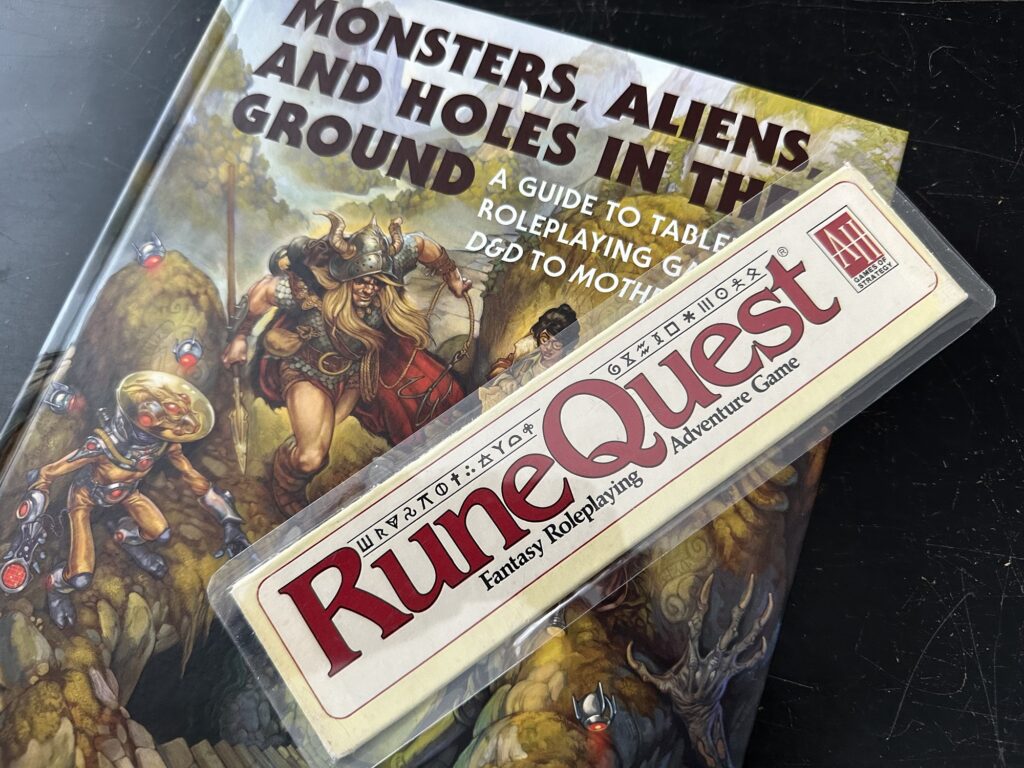
“Monsters, Aliens, and Holes in the Ground” is published by MIT Press, but you can get it from any decent bookstore. And probably quite a few indecent ones too. You can list it on StoryGraph or GoodReads and go from there. I highly recommend the book as a gift to any tabletop gamer in your life whose friendship you think is worth around $50! And if that friendship is worth less, I guess just gather money from more of their bad and cheap friends until it makes $50?